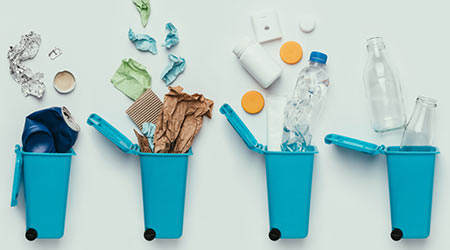As part of its sustainability plan, software and technology behemoth Microsoft has pledged to eliminate waste from its operations, products, and packaging by 2030. Additionally, employees’ waste outputs will be addressed. The tech behemoth also detailed how it planned to implement ‘Microsoft Circular Centers’ at its data centres, eliminate single-use plastics in packaging by 2025, and “transform its waste accounting” by digitising its data, as part of a $30 million investment through the company’s Climate Innovation Fund. It also aims to include recycling and composting as a part of achieving its zero waste goal.
The concept of zero waste
Microsoft claims that by 2030, it would remove at least 90% of solid waste from landfills and incinerators from its campuses and data centres. It has committed to producing recyclable Surface devices, a line of touchscreen-based personal computers and interactive whiteboards created and developed by the business. Microsoft claims it will use 100% recyclable packaging in OECD nations and divert at least 75% of construction and demolition trash from all projects. In addition, the company announces a $30 million investment in the funds of investment firm Closed Loop Partners to assist expedite infrastructure, innovation, and business models for supply chain digitisation, e-waste collection, and sector goods recycling and composting of food waste. Finally, Microsoft claims it is building an internal Power BI waste data dashboard to show employees the impact of their activities and how much waste they produce. The dashboard will show the average trash created per employee and may be used to assess the efficacy of waste reduction programmes, waste prevention initiatives, and other activities.

Circular centres
Microsoft intends to repurpose and recycle its servers through ‘Microsoft Circular Centers,’ which it says will be situated initially on new large datacenter campuses or regions and then added to current ones to decrease waste. Microsoft claims that it will handle servers and hardware retired on-site using machine learning. In addition, it claims that it will sort the components that can be reused and recycled by the firm and its clients and those that may be sold. Microsoft anticipates its Circular Centers to enhance server and component reuse by up to 90 per cent by 2025.
Data
Microsoft says it invests throughout the organisation to digitise waste data to find opportunities to improve waste data collection. According to the firm, these digital solutions for its operations will include technology to manage and report on dashboard trash, Power BI platforms for e-waste chain-of-custody, and improved Power Apps that enable Microsoft to gather real-time waste data.
Conclusion
The zero-waste promise complements Microsoft’s other significant environmental objective, which it announced at the start of the year: reaching carbon negative by 2030. To combat climate change, Microsoft stated in January that it will remove more greenhouse gases from the environment than it generates by 2030 and undertake the enormous job of reducing all of its carbon dioxide emissions by 2050. By recycling and composting its waste, it aims to produce recyclable devices and computers.

